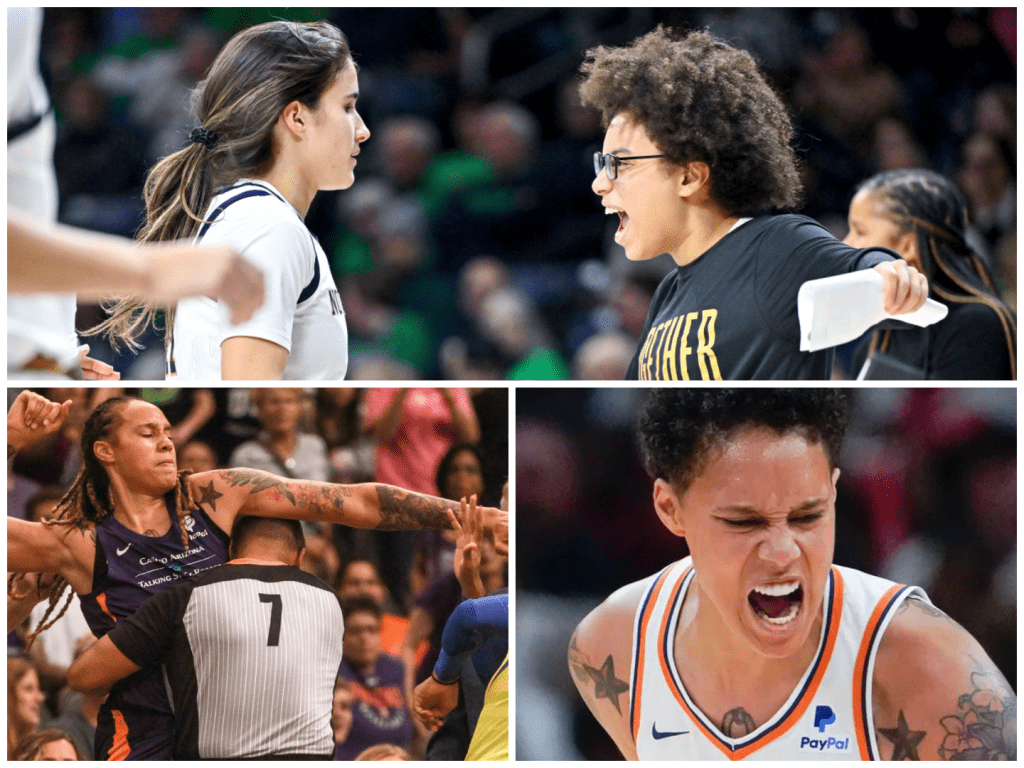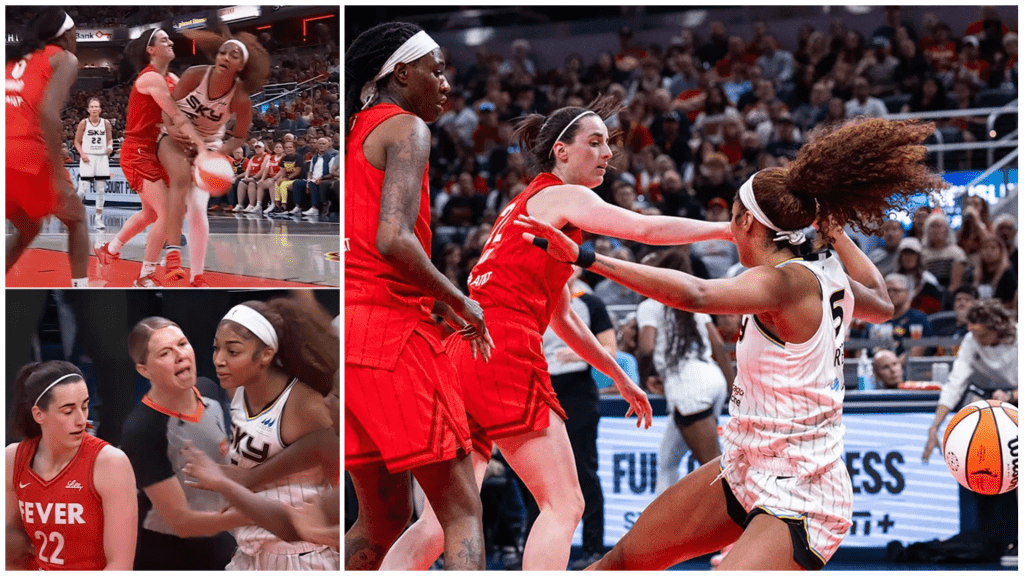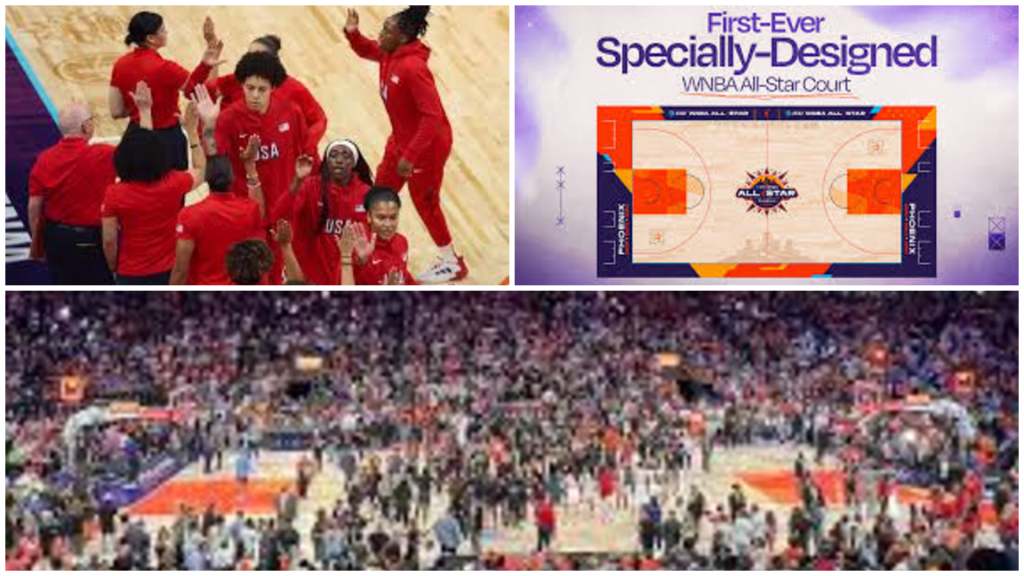How Fights, Fan Reactions, and Black vs. White Narratives Are Creating a League-Wide Crisis

Tensions Boil Over On and Off the Court
The WNBA is no stranger to rivalries and passionate fanbases, but recent games have taken a darker turn. When Phoenix Mercury’s Brittney Griner was caught on camera allegedly shouting “white girl” during a heated exchange with Indiana Fever’s Caitlin Clark, social media erupted. Just a week prior, another incident involving Angel Reese and Clark led to an on-court hard foul, fan boos, and a full-blown WNBA investigation into alleged racist slurs from the stands.
Although the league ultimately found no evidence of hate speech from fans, the damage was already done. Every minor clash between players now seems to come wrapped in racial commentary, whether it’s based on verified actions or not.
On YouTube, titles like “Brittney Griner caught using racial slur” gained millions of views. Twitter (now X) was flooded with users demanding punishment for Griner, while others defended her, claiming the words were taken out of context. Meanwhile, conservative commentators like Riley Gaines doubled down on framing the situation as a double standard, stating: “If Caitlin had said the same thing, she’d be suspended immediately.”
The growing narrative of a “Black vs. White” divide is now seeping into nearly every Fever game Clark plays in. And the players are fully aware of it. Caitlin Clark, in a recent interview, emphasized, “I’m here to play ball. Not to feed into anything else.” Angel Reese took a more pointed stance: “We deal with stuff y’all don’t even see.
Fights, Fouls, and Fallout: The History Behind the Heat
What we’re seeing today isn’t entirely new. The WNBA has always had its share of fiery matchups, but the context has shifted dramatically. In 2008, the infamous Sparks vs. Shock brawl erupted in a full-court melee involving Candace Parker and multiple ejections. Back then, it was seen as a “tough game gone wild.”
Today, however, when a Black player fouls a white player, or vice versa, it becomes a flashpoint for deeper social issues. The media ecosystem, hypersensitive fans, and politicized narratives around race, gender, and fairness fuel the fire.
Let’s break it down:

- Angel Reese, a proud and outspoken Black athlete, is frequently vilified online for behaviors that would be seen as “fiery competitiveness” if performed by others.
- Caitlin Clark, as a white superstar, is often placed under a spotlight that forces every moment of contact to become a litmus test for racial double standards.
- Brittney Griner, still recovering from her 10-month detainment in Russia, has become a symbol for multiple causes, and her words are now parsed with heightened scrutiny.
When Griner allegedly said “white girl,” it wasn’t just a trash talk moment—it became a symbol of perceived reverse racism. Conservative platforms jumped on it. Progressive ones dismissed it. And once again, the sport took a backseat to spectacle.
Even referees are under fire. Fans claim Black players are called for fouls more often, while white players like Clark are allowed to play more physically. Whether or not stats support that, the perception is enough to deepen divisions.
Add in TikTok montages showing Clark getting elbowed or Reese being booed, and you have a recipe for constant friction—not just between players, but between fans, cultures, and entire belief systems.
Can the WNBA Survive This Racial Pressure Cooker?
The WNBA is growing—that’s undeniable. Caitlin Clark brought a record number of eyeballs to the league. Angel Reese has sold out arenas. The Las Vegas Aces, New York Liberty, and Indiana Fever are drawing the kind of attendance that once felt impossible.
But at what cost?
When every game is a culture war battleground, the sport suffers. Fans begin tuning in less for the basketball and more for potential drama. That’s unsustainable.
The league now walks a fine line. If it ignores racial tension, it appears tone-deaf. If it overreacts, it alienates players and fans. And when players are forced to address politics, race, and identity every time they step on the court, their ability to simply compete erodes.
Solutions won’t be simple, but they’re urgent:
- Stronger internal player protocols: Educate players on how in-game words and actions can be perceived beyond the court.
- Media accountability: Stop turning every foul into a racial statement.
- Fan engagement teams: Stadium-level efforts to mediate, report, and deescalate hostile fan behavior before it spreads online.
The WNBA has a golden opportunity right now. It can either rise above the noise or be consumed by it.
Basketball is supposed to unify. But without action, it could end up doing the opposite.
